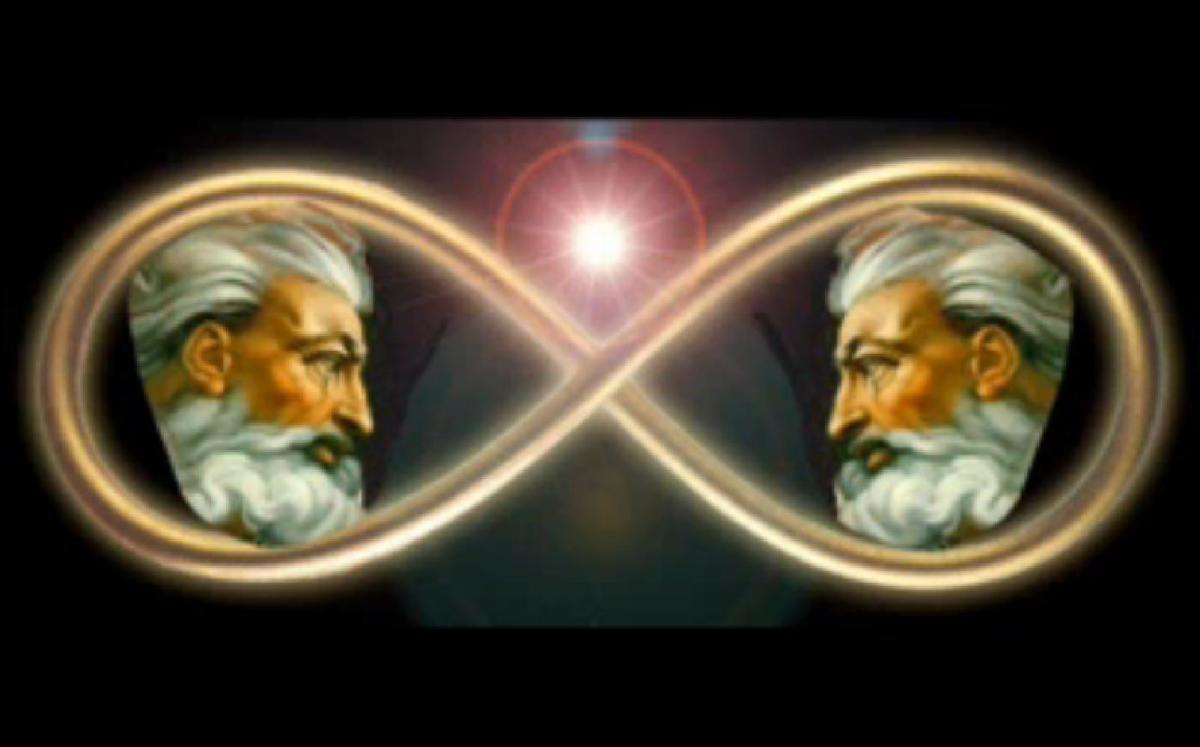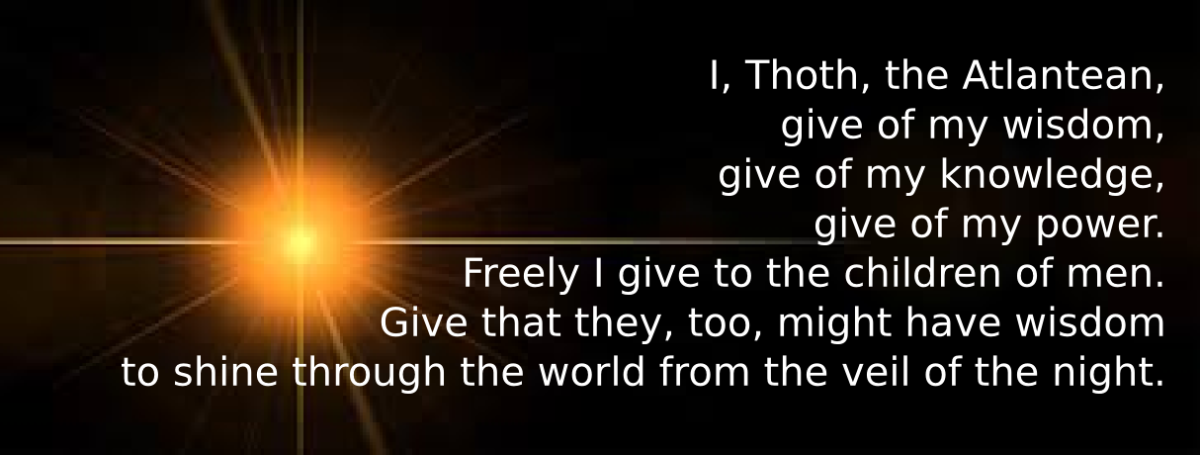The Nature of the Universe, 4 What is time?
It really isn't all the difficult
“What is Time?”
Sounds mystic or philosophic, doesn’t it?
Simply put, time is a metric which measured duration.
Any subject, such as this one, can be examined from different viewpoints. This is not to say that none are correct or worse, that all are correct, but there are many ideas about subjects, such as time.
It really isn’t all that difficult.
If you ask a philosopher the question you might get any number of answers because they may have differing purposes at any given time. They may be espousing what physical science currently presupposes and/or implies about time according to the currently held majority theory such as quantum mechanics, or other theory, or even a cosmological view of those theories.
Our own existential experience (i.e. those experiences relating to our existence) tells us the same thing physics tells us about time, that it is a linear continuum of events, moments, or instances, the duration of which can be measured with time, and is always current, that is, it is always “now.” Some falsely claim it is simply the sequencing that goes on with matter and only inside the physical universe, but this is merely a description of that which takes place as time continues and the universe exists.
When I was very young, days seemed to last for much longer periods than they do today because each of us had experienced so few of them. As I grew older I realized that each day seemed to go by faster. The joke is, now weeks seem to be like days were, and years like months. But when I went someplace I enjoyed I always enjoyed the “now” of the experience. “Now, right now I am in Disneyland” or “right now I am on my sailboat” or “right now I am at a wonderful Christmas party.” What is interesting is last month I was in Yosemite and I stopped and did exactly the same thing, just to enjoy the moment. This is the correct way of interpret “living existentially” or moment by moment. Now living for the past, it cannot be retrieved, not living for the future, it is not real, only “now” is real. That is how time works.
No, God cannot go back in time either because it is not within the realm of possible things.
The question then becomes: Is this description only a practical description, that is, it describes how we use time and we invent the description for convenience, or is it a descriptive or experiential description, that is, how we see it but not necessarily how or what it is, or is it actually a discovery of what time really is?
A company we owned built a time and frequency standard for the military and we could take a one second interval and divide it into one trillion sub units called hundredths of a nanosecond. Aristotle pointed out that the continuum can be subdivided indefinitely, but this does not mean that whole seconds do not exist; they do exist as we all experience them. But the philosopher may ask, if it can be divided indefinitely, then how do we really know it is a continuum?
That is a little like asking, how do you know your car is really a car since it can be divided into various metals, rubber, plastic, oil, gas, etc. Again, simply reductionism does not disprove what a whole is, that is, just because I can divide something does not mean the whole is nothing at all or that it is not real.
But more than this, the reductionistic statement misses another aspect, that of measurement. Seconds are an arbitrary manner of measuring time, just as other time units are, such as millenniums, centuries, decades, years, months, weeks, sidereal days, 24 hour days, solar days, hours and minutes.
The measurement of something is not the thing itself, it is simple a way of describing the thing.
My car, let’s say, is 10 feet long. Is my car actually ten feet, that is the length? No, they would say, my car merely measures ten feet. I could use other equally valid measurements, such as tenths of an inch to describe the car, or millimeters, etc. But that is what a measurement of length is, a unit along some dimension into which that unit of measure fits.
So one of the first things we need to divest ourselves of is the concept that a second is time itself, that is time per se when it is merely a way to measure the dimension of time just as nanoseconds are a way to measure smaller pieces of time and a ruler measures things along a length or width, or height dimension.
The measurement of time is not duration itself any more than an inch is actually length per se, as opposed to a measurement of length.
I can look along the inch and see what direction it points, but what I am doing is looking along a ray which starts with my eye and continues until I see something that blocks further vision along that ray.
The ray continues along the dimension.
There is length involved and the length of vision, being in the physical domain is limited according to how, where, and under what conditions it is done, what the environment is, and so forth.
As I write, I am looking out my window and I am seeing to and then through different things. At three feet I see a window, which I can also see through, at eight feet I see an Epiphyllum cactus, what is called an orchid cactus, and I can see through the window but around the cactus and beyond that about 40 feet to a Yucca grandiflora in bloom at the moment. Beyond, around the Yucca that I see a deciduous ash tree some hundred and fifty yards then beyond that only blue sky. I see through the glass, around the cactus and either around or between the leaves of the Yucca and an ash tree.
So I am looking along a specific length, a dimension to each in turn, or between the leaves, or around it. I am looking through a window and through the sky until the sky’s blue light bending effect turns everything blue to the eye, thus occluding the stars that I would otherwise see.
But when I rose this morning, the sky was not blued by refracting (bending) light from the sun, 93 million miles away (=1 Astronomical Unit) and I could see hundreds of millions of miles. I could see Jupiter more than 365 million miles away from us, about 5 astronomical units from the Sun, and beyond that I could see stars many light years away. But these are all distances, which measure the dimension of length just as a seconds or nanoseconds measure time, but well, light years are a combination are they not? First you need to know how far light travels in a year, and then, the unit of time indicated. A light year is a way to indicate how far light travels in the time period we call a year.
I cannot look at the length. If I stood to the side to see the dimension of length I was looking along I would see nothing. But I can measure it with differing amounts of accuracy. Those distances printed above are all guesses and so not very accurate.
Last night was a spectacular sunset. Within that sunset was a phenomenon caused by clouds blocking the rays of the sun which otherwise would have turned the blue portion of the sky a beautiful pink. So we saw what is called a crepuscular ray.
The word crepuscular means the time period of dust or dawn. Crepuscular rays then are what seem to be rays of blue, or rays of pink or orange, according to how they are arranged.
So in that I could look “at” the length of sky that was not colored pink. But this too is an illusion of looking “at” length because what I was really doing was looking through that patch of sky left uncolored to the blue sky beyond, that is, to that distance where the blue light refracted through miles of sky to appear blue.
So measuring time is a method of looking at time, but our existential experience is passing along or through time.
The arrow or direction of time can be seen when one runs an old film style video backwards. One immediately recognizes something is wrong. Things cannot happen that way unless it is an elaborate ruse.
Such a trick was played, but only for fun, when a film maker filmed a tremendously talented performer walking and singing backwards down the street as other people walked by normally, and then they played the film backward. All the normal people were moving backward and only the actor seemed to be moving forward, though the pronunciation was a bit off. It was quite odd, and even odder when actually played the right direction. One was awed by the talent and thought put into it, but played in either direction you immediately saw something was amiss. The arrow of time was not disturbed, as it cannot be disturbed, but the mind was tricked. When the video was played forward it was exactly what it appeared to be, a human walking backward and pronouncing a very complicated series of words in English, but backwards.
Time has that particular quality of always being in the present.
Some very good philosophers, even Christian apologists of current stature have swallowed the mistaken statement that “you cannot traverse an infinite amount of time,” as if time were something traversed, traveled, or something that has length. But that is not the nature of time. They then justify the idea that time must have been created because there could not have been an infinite past which even God has traversed since you cannot do so. Ergo, God is outside of time.
They misunderstand time. False conclusions come from misunderstandings and misconceptions and false philosophies.
One does not traverse time, one is merely existing or enduring, you have some duration, and experiences reality as “now” continually, and so progresses.
We tend to use words about time that make it sound like it is measured using a ruler i.e. it is a length, partly because existence is purely linear, never turning back and never changing directions, so is subject to linear concepts such as lines, rulers, and descriptions similar to those used in those dimensions.
It is true you cannot traverse an infinite distance because the term “infinite” means without end, however, going in one distance can be reversed, that is, you can turn back and go the other direction which is not true of time, so the simile or analogy breaks down.
Where the analogy holds true is stated in an old existential statement, a tautology, “wherever I go, there I am.” Travel as far as you would like along any length, any distance, and use whatever metric you choose to measure where you are, but wherever you are you are there and not some other place. This part is true of time metric also because it is always present tense; it is always “now.” So, whenever you are, you are then. However, location is always experienced by the mind in a similar manner since you are a singularity.
You cannot argue that “now” does not exist and more than arguing “here” does not exist. The question is why is there a succession of events?
You can successfully argue that neither the future or past exist now, but you cannot argue that now does not exist.
The fact that you speak one word at a time is a proof of this. You read this the same way. Even those with photographic memories still only capture the image in a glance, but to read and understand a sentence, it must be read one word at a time.
In a very real sense, that is all of any timeline that currently exists. Everything else is simply an analogy or comparison, a metaphor or allegory, or some association with some other dimension where we can go both forward and back.
No metaphor can completely and fully explain since it is not literally applicable, rather only representative where there is an abstracted linkage. We cannot extend metaphors and similes to apply terms that are applicable to another dimension, say, length, which is the very claim “you cannot traverse an infinite.” That isn’t the nature of time, as above, it is the nature of infinite length.
You need to understand when a metaphor diverges from being accurate, and this particular metaphor, that is, traversing endless time, has actually existed for far too long a period of time.
The Sequence of Typing
As I type, words appear in order or procession but by the time I look to see them the time in which there were put on the screen has passed and is in the past, and, though I can backspace and erase them, the time in which there were originally created has passed and cannot, under any circumstance be regained, thus the term “wasting time.”
Several people have stated, if God is in time “why didn’t God create the world sooner?” To which I reply, “He did.” That confuses them because they are thinking of it as if it were a location on a length continuum. When they ask what I mean, I return the favor and ask what they meant, but they cannot answer because time is always in the present. The metaphor breaks down.
In the relatively brief span of a human life, when you start something is important because of, the, say, one hundred years life potential. Starting long projects when you are old is stressful, and so forth. God is not like that since he is not limited by time, that is, he has infinite time to act. But, as is true with us, time and existence is always experienced as present tense, or “now.”
Those same theologians and philosophers mentioned above would argue for eternal life of and for Christians and that God is eternal. But, as we have seen, eternity means endless time in the past or future, or both. These people equivocate the term when they apply it to God to make it mean “without time,” and the word is thereby made meaningless. You may as well say the gift of God is shavatib life. This is, of course, a word I just make up, and is meaningless. So, God has lived for shavatib and shavatib. This phrase would have the same meaning as “God has lived forever and forever” of time is not requisite of the word used because “forever” indicates perpetual time in the future and “eternal” means perpetual time but can be used of only the past, only the future, or both.
Interesting that the Hebrew words mean precisely that, perpetual. In Isaiah 45:17 the two words are used together, ‘owlam ‘ad which can be translated, perpetual time, perpetual time. Even in the N.T. Greek, aion means perpetual time, so Ephesians 3:21 the doubling of that word can be translated “perpetual time, perpetual time.”
Without time the word has no meaning and any other meaningless word can be substituted because A=A.
First Time
In this description, Aristotle was right, that you cannot have a “first time” because we could then ask what happened before that? Why can’t you have “first time?” If there were no time you would not have the delineating market “first” along the time domain, and nothing could be sequenced, you could not then define “second” time, or “end” or any other time delineating term.
So, let’s say God existed without time; he could not do anything at all because he would require a sequence of events not possible without time. As before, a beginning or start is a marker that is used along the temporal existence index itself, so without that index you cannot start anything.
Let you Naturalists have an “ah ha!” moment, you have exactly the same problem.
A Thought Experiment
A brief thought experiment: Your friend tells you to go outside to measure the line he has drawn on the pavement. You take your tape measure and step outside only to find there is no line on the pavement. This is God without time. He has no timeline, and therefore no presence in time, that is no existence! He is not “now” because that is a description of the current state of time.
The thing perhaps most misunderstood about time is the personalization of it and mistaking our circumstance for reality. This is, of course, subjective reasoning and subjective reasoning is only true about us, not about objective reality.
I can say, “This is taking forever” but what I mean is, “this is taking up a more of my time than I would like.” However, the clock on the wall has neither slowed nor been swifter than normal while you have waiting, and, if I were out doing something I enjoyed during that same interval, I would have said “time went by so quickly.” So, our perception of time passing is completely irrelevant to what time actually is.
Isaac Barrow (1630-1677) a Professor at Cambridge was correct in his conception that time was absolute. Everything that exists must be understood in its relation to time as a reference point. Thus we refer to God as eternal, meaning endless time (time without a beginning or an ending), and we refer to ourselves as temporal, since our bodies die (we lost an aunt just this week), and also as eternal since our souls will not die, our soul, created in time, has no ending, and therefore is also eternal, but future eternal only, not past eternal. This requires the passage of time.
We refer to things that are in the past, or that have not yet come to pass. Words are tensed indicating time as a reference, past, future, or present.
Jean Claude Pecker writes in Understanding the heavens(Springer) concerning Barrow and Pascal (p.267) “Although the mood at the time was a return to some form of Platonism, implying some Creation, the old Thomism is also present, perhaps close to Jansenist thinking (editor’s note: Jansenism, is a Catholic Augustinianism very close to Calvinism). The concept of Creation is of a metaphysical nature and does not contradict the mathematical Euclidian-Cartesian concept of infinite time and infinite space.”
Barrow believed Aristotle was correct in the idea that before every instant there was another instant. He is correct. Barrow and others believe, as I do, that time existed before the creation simple because if it didn’t these would be nothing that existed and, ex nililo nehil fit, from nothing comes nothing. It necessarily existed before creation or creation itself could not have happened. Why? Because the first Hebrew word used in the Bible (re'shiyth) means to start something, to begin, the first of something, in this case, the beginning of the creation of the physical world, a time maker on the dimension of time itself.
Apologies to Newton (time and space are eternal “substances”) and Leibniz (time is the ordering of the change of events) but I think I could convince Leibniz because he had a category he called “ideal entities” which comes quite close to a necessary dimension, but uses old Platonic language. Perhaps Newton would have agreed also since he believed time was absolute, that is, existing independently of the physical universe and independently of change per se even though he thought is a “substance.”
Hermann Minkowski described four dimensional space-time and unified them, a concept that is likely going down the correct path, but not quite there yet. If he added that they necessarily exist then he is there.
Independent reality does not change from one reference point to another, and time is like this also, as are the other dimensions. In fact that is likely a good starting description for what a dimension is, a reference point, but it is more, they are necessary for things to exist.
Einstein improperly rejected this in his 1905 general theory of relativity claiming that all things are relative to your reference point, that there is no such thing as a non-relative reference point but remember, he was an avowed atheist and naturalist. He is only considering the physical universe and nothing, even his thoughts, are anything except results of chemical interactions.
He was also wrong. For one, why should I think the chemical interactions in his brain are more important than those from an elephant, or water pond?
He tried to overthrow the theories that dominated the 18th and 19th centuries to promote his teacher’s, Earnest Mach’s philosophic naturalism, and so, was the dominant factor is all things becoming relative to the observer.
Mach did not by any means originate naturalism; you also see that idea in Greece 2500 years ago. This is subjectivism and is very inappropriate when discussing anything that is objective. It is simply the wrong theory. Mars is not subject to my ideas, it is objectively real.
The question arises about space-time which disagrees that time is the fourth dimension independent of space. Space-time is considered to be a unity and time is the fourth dimension of that unity, and so is sometimes reduced to the complex idea of space not being locations per se because of the time linkage. That is space-time is a series of events that occur in the presence of ever changing properties of physical things and that you cannot truly have mass in some specific location or time independent of that continuum.
The truth is, space-time is a domain, as described above, that domain has (at least) four dimensions.
However, properties of things are usually independent of those things they are part of. If I do not get sufficient sleep, I become grumpy, but I am criticized for my grumpiness because it is independent even of the person who is experiencing it. But, let’s get physical.
I can put an ice cube on the ground and measure the height, width, and length of it and I can see each of those measurements change over time. Let’s say, when this thought experiment started the ice was one foot by two feet by three feet, respectively. I do not say the time is 1 foot nor two feet nor three feet, I use an independent measurement for time just like I used three different measurements for the height, width, and length. These are all independent facts about independent variables of an object inside absolute dimensions and along those dimensions where we have starting points and ending point to the dimensions. The height will diminish with time as the ice melts assuming the room is warmer than the ice, I can cut the length down with a saw without diminishing the height or width. Things that are independent are identified in any rational philosophic discussion as different things, not united and indivisible. If they were some unity, or singularity we could not measure them independently.
I can completely agree we exist in that concept of space-time as a domain, though it may also have other dimensions. I would argue there are, according to the definition of the word dimension, more dimensions in this domain than only space-time, however, once more, space-time is a domain in which other things exist.
We can posit a statement which cannot be proved, that wherever you have dimensions interacting you will create appropriate domains. I am reasonably sure we do not yet know all the dimensions nor do we know all of the resulting potential domains (though all of them need not be identified as separate dimensions.
What Christians call the “spiritual” world, domain, dominion, or other term for heaven exists in these in some different configuration that can and periodically does interact with ours.





